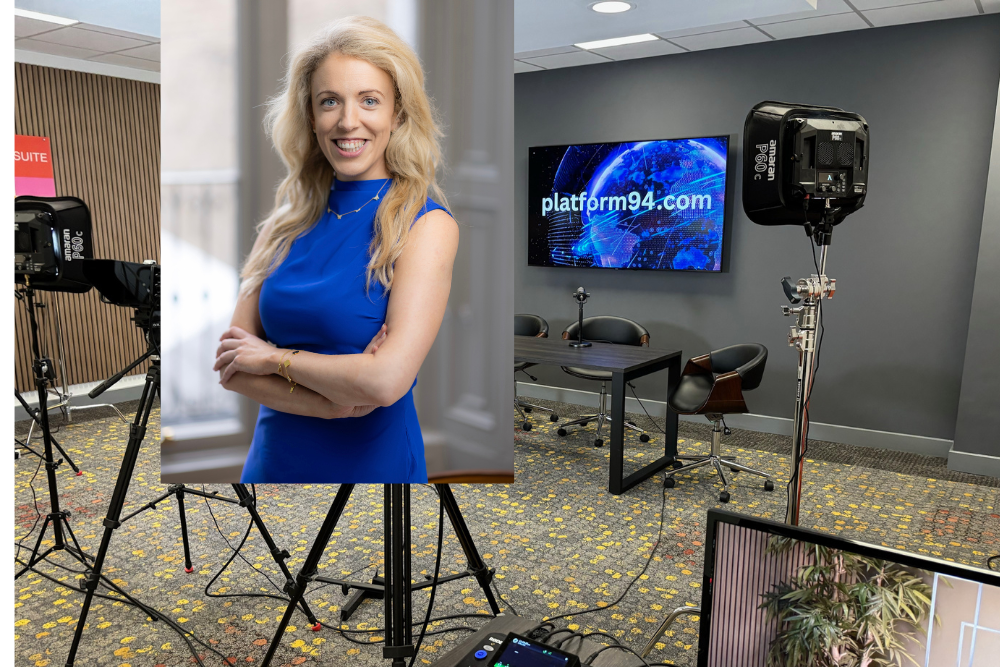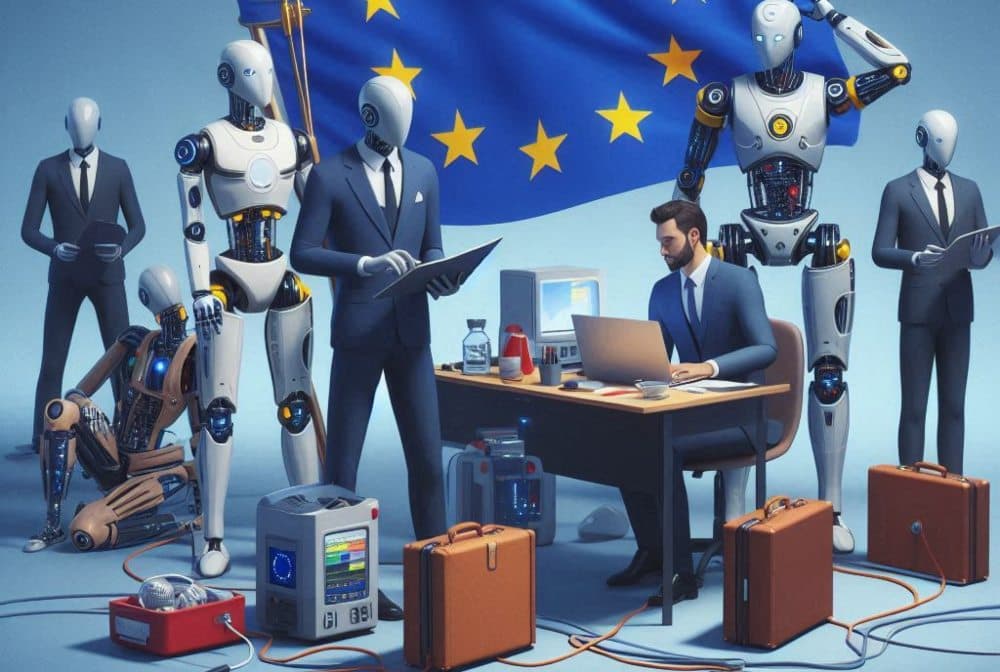Podcast Ep 218: Helping make AI useful for businesses is a passion for John Clancy, the CEO of scaling Galway AI business Galvia.
Instead of worrying if artificial intelligence (AI) will take our jobs, the conversation should be how workers and business leaders can leverage technologies like AI as well as their own data to make better decisions.
That’s the perspective that John Clancy, founder of Galvia, brings to the table.
“We’re very proud to be from the West of Ireland. Our premise is that every business is unique, with unique products, unique customers, unique systems and unique data. We believe your AI should be unique to your business too”
He views the onset of powerful AI technologies as an opportunity to level the field between SMEs and their larger corporate counterparts.
He knows what he’s talking about. On the one hand he is a member of the Irish Government’s Enterprise Digital Advisory Forum which is aiming to bring about a step change in how firms adopt AI, on the other hand since 2017 he has worked with large global enterprises like Nestlé, Medtronic and Atos to help them leverage their data to make better business decisions
His business Galvia is an AI-powered decision intelligence platform that draws actionable insights from enterprise data.
As a serial entrepreneur John is continually identifying new opportunities to make AI accessible to every organisation, big and small. He has won numerous awards for growing companies in different industries. He has a passion for creating successful businesses, building enduring business relationships, value selling, and leading teams.
He has seen first-hand how AI is a game-changer for SMEs, providing them with the ability to improve their business processes, enhance customer experiences, and drive growth.
Delivering intelligence
“I set the business up with my CTO back in 2017 as Chatspace and we were primarily focused on natural language processing, conversational AI and automating workflows for very large enterprises. Our first client was Nestlé in Switzerland which was great. But as a start-up – and we were bootstrapping at the time – it’s a very expensive country to visit. But it was a great experience to understand the world of large-scale infrastructure data with a company that has 500,000 employees across 52 countries.”
The business rebranded as Galvia (the Latin for Galway) two years ago.
“We’re very proud to be from the West of Ireland. Our premise is that every business is unique, with unique products, unique customers, unique systems and unique data. We believe your AI should be unique to your business too.
“So we give our clients – primarily in the SME world – everything they need to harness the true potential of AI. We do this in weeks and not years because typically these projects can become 18-month projects that can drag. So we’ve taken the learning that we developed with the likes of Nestlé, Cognizant and Atos and have built a product that we are able to integrate and deliver intelligence across different data sources for companies of all sizes, but for SMEs primarily.”
Unless you’ve been hiding under a rock in recent years, we are now at the early stages of the mass consumerisation of AI thanks to the relatively recent availability of platforms like ChatGPT and Microsoft’s Copilot. Where this will bring the world is anyone’s guess, but any business owner worth their salt right now will be wondering about how this will change their business and the tasks of their employees.
Clancy says the way to think about AI as a business owner is to see it as a crude, but effective tool.
“Typically, what I would say to any small to medium sized enterprise, or any enterprise is if you had access to 1,000 interns this morning that were extremely eager, not that experienced, what tasks would you put them to right now to make your life easier? Tasks that will enable your business to drive revenue, cut costs, or allow you to become more efficient and better at spending more time with your customers? Because, as you correctly pointed out, like we look at this as like the jagged frontier of AI, you know, there’s been a massive rise in Gen AI usage, which has been good for, I would say our business, because it’s created an awareness, but it’s also created a lot of noise.”
He says that one-size does not fit all when it comes to how these new technologies can be harnessed. If anything, we are at a kind of Wild West moment. A new frontier.
It looks to most people that Generative AI (GenAI) will give them super powers when most of the real heavy-lifting is happening through technologies like machine learning. People are distracted by a kind of shiny new bauble, while not realising that it is a distraction from the real, less glamorous work happening elsewhere.
GenAI, he warns, is not perfect. “It doesn’t work like we think computers should work. Typically it is bad at maths, but excellent at query capability.
“What we say to look a lot of our clients and potential clients is if your business challenges are around information retrieval, search, document queries, creating documents or interpretation, then genAI could be a good fit for your business.”
However, he warns genAI doesn’t guarantee success. Whereas machine learning if correctly applied can be the real game-changer.
A digital marketing agency he collaborated with recently that works with one of the largest consumer packaged brands in the world gave genAI to its staff. Instead of its staff becoming more creative, they created more data than was necessary.
“So what we built for them was an AI that’s trained on their data for what success and failure looked like for every single campaign that they ever ran in the past 10 years. So if you are a junior marketing person in their creative team and you’re writing a brief for an upcoming marketing campaign, there is a structure format and system you can do that in. We are like AI plumbing, we exist in the background. The AI will get that person to a place where their brief will be sharper, better and will impact with clients in terms of relevance. This is better than starting with a blank screen and a flashing cursor staring back at you.”
“From a machine learning point of view, it’s job is to help you find the right answer, predict something that is going to happen in your business in the next month or two so you can act now and be proactive. We have deployed models that help clients look at financial and legal metrics, identify risk int their business and basically see around corners three months out. It’s a very powerful tool from a financial perspective with our clients.”
One of Galvia’s clients is NTT DATA, a global IT services company with billions of dollars of revenue, that is using the Galway firms’ platform to predict what is going to happen in the future.
“We spent the guts of lockdown building this model and training to be able to deliver relevance because we know we’re going to be dealing with CFOs, CTOs and CIOs, so we can’t get this wrong.”
The key is helping organisations get their data into a shape whereby machine learning can extract insights.
“We’re bringing this capability to SMEs across Ireland and the UK over the next 12 to 24 months. We’ve done it for some of the biggest companies in the world and we’re now making it available to them.”
Building for the future
If Clancy has his way, Galvia could be one of the west of Ireland’s most successful homegrown digital success stories. The company has raised €3.2m in funding, recently moved into the Platform 94 hub in Galway and has plans to expand into Europe from Ireland’s western edge.
“Scale for any organisation is a challenge. But we’re lucky. Our core team is here in Galway. We don’t offshore or nearshore. We have built a technology that has legs.
“Platform 94 is a fantastic, connected space full of other scale-ups who are going through the same challenges and there’s a nice peer-to-peer sharing spirit here where we can be open and honest with a lot of other CEOs and founders who have set up businesses.
“Our focus for the next 24 months is to establish and open an office in Manchester in the UK and use that as a hub.
“We already do a lot of business in Germany and Switzerland and recently signed up a new client in The Netherlands. Enterprise Ireland have a fantastic network of overseas advisors and offices in these countries that help you understand the ecosystem and get setup.”
He plans to double the core team at Galvia from 12 to 24 in the next 12 months and has partnered with IT services giant Cognizant to help deliver its services.
“We are a product company and we want to stay focused on making the product as good as it can be so we can scale a little bit faster. The whole growth of the business is will be about keeping up with demand.”
-
Bank of Ireland is welcoming new customers every day – funding investments, working capital and expansions across multiple sectors. To learn more, click here
-
Listen to the ThinkBusiness Podcast for business insights and inspiration. All episodes are here. You can also listen to the Podcast on:
-
Spotify
-
SoundCloud
-
Apple






